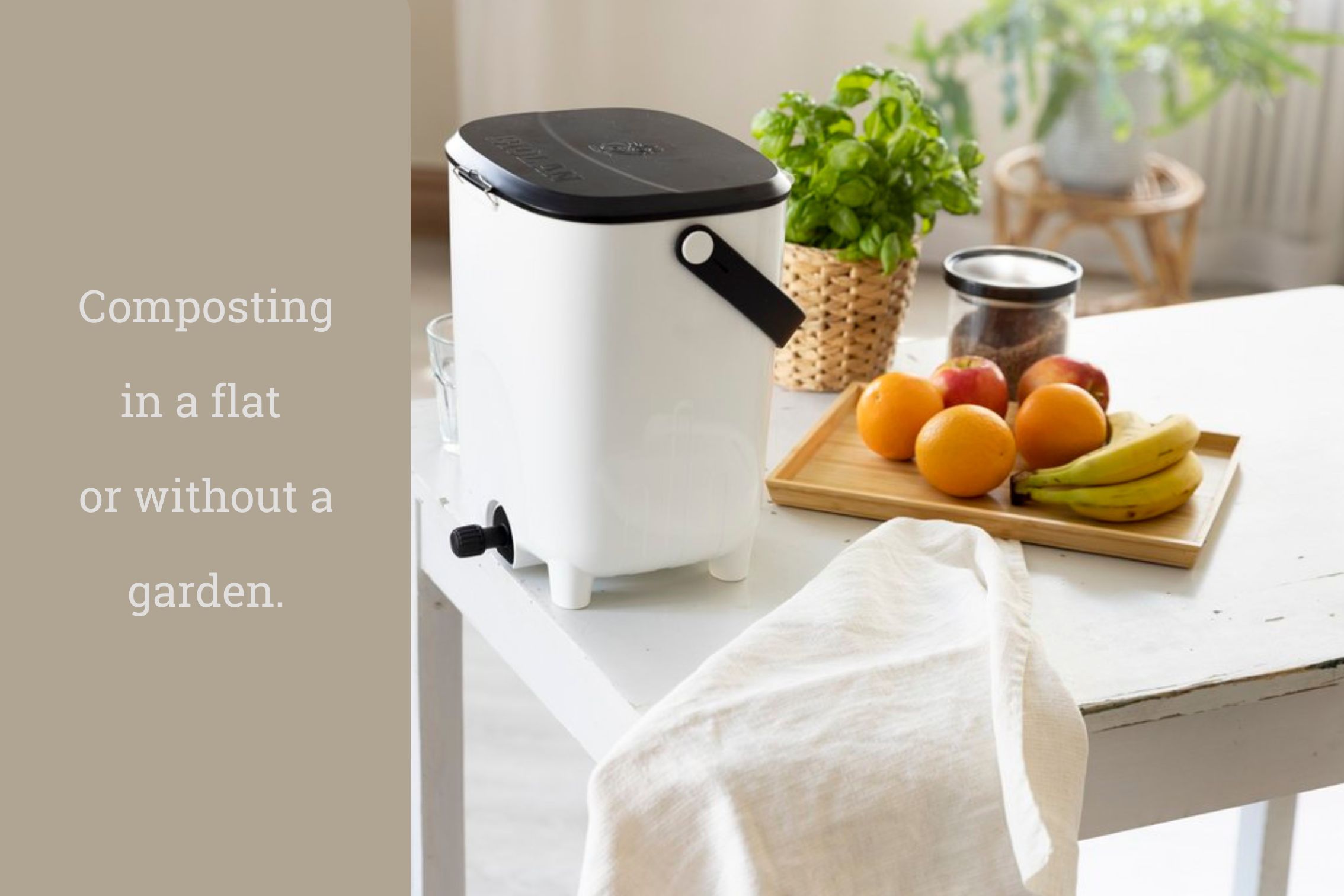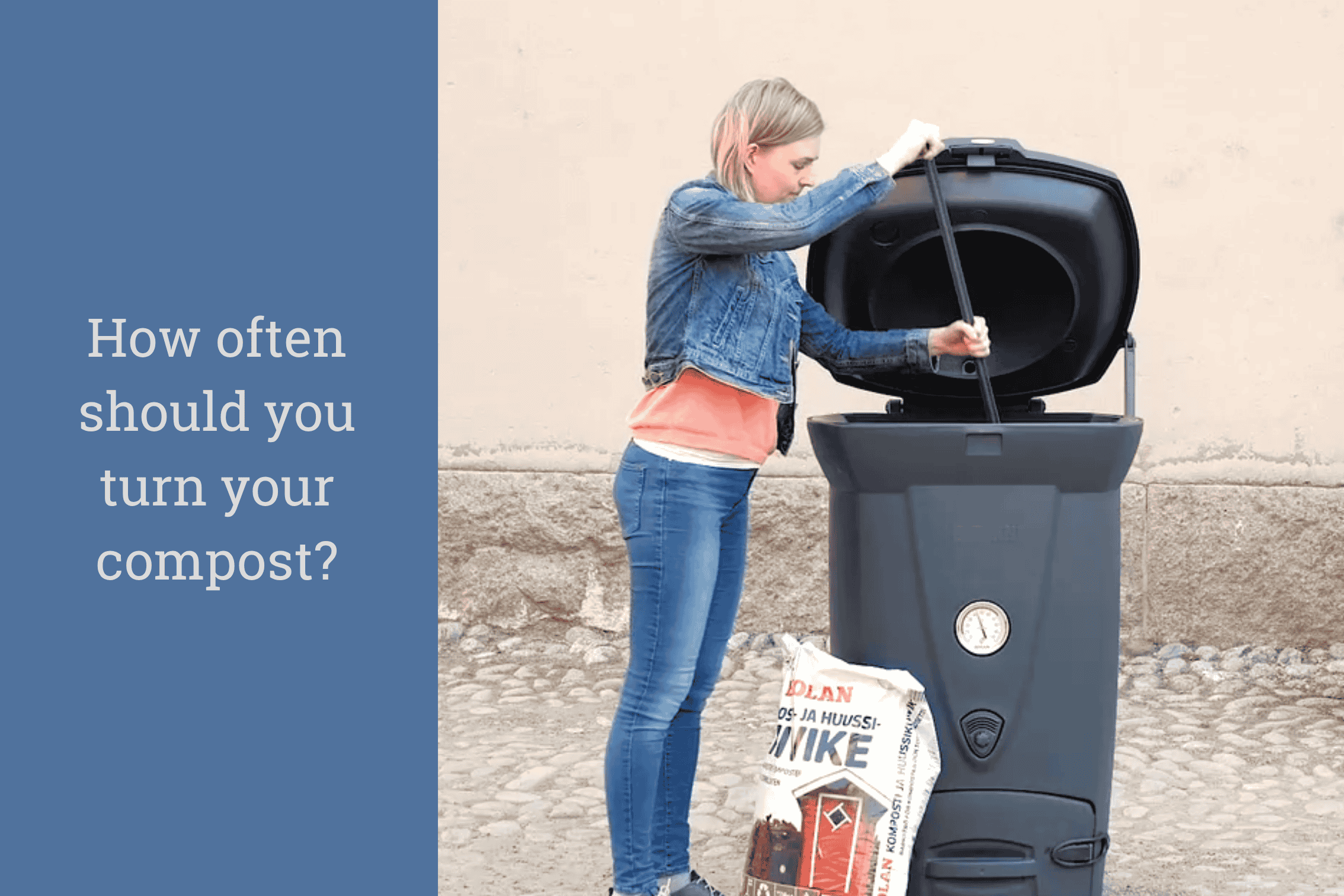.png)
How Does an Insulated Aerobic Composter Work?
Insulated aerobic composters speed up decomposition, manage odour, and work all year. Learn how they retain heat, regulate airflow, and simplify compo
If you’re looking for a way to turn kitchen scraps, garden waste, and even toilet waste into rich, nutrient-dense compost for your garden, an insulated aerobic composter could be the solution you’ve been searching for.
These clever composting systems speed up the composting process while keeping odour in check and reducing the need for constant turning. But how exactly does an insulated aerobic composter work, and why might it be the right choice for your composting needs? Let’s dive in.
What is Aerobic Composting?
Before we jump into the specifics of the insulated variety, let’s take a moment to understand aerobic composting in general. Aerobic composting is the process by which organic matter (such as food scraps, garden waste, and plant material) decomposes in the presence of oxygen. In this process, micro-organisms,(in this case “good” bacteria) break down the organic material into nutrient-rich humus (a fancy word for well-decomposed organic matter) with the help of oxygen.
These micro-organisms thrive in warm, oxygenated environments. As they break down the organic material, they generate heat, which speeds up the composting process. This is why aerobic composting typically produces a hot pile (around 55-70°C). The heat also destroys harmful pathogens too.
In a traditional composting setup, like a garden compost pile, the materials are exposed to air and oxygen, which helps keep the composting process aerobic. But it’s not always easy to maintain the right conditions - especially during the colder months or if we experience lots of rain. That’s where insulated aerobic composters come in.
The Insulated Aerobic Composter
An insulated aerobic composter is essentially a composting system that’s built with insulating materials to help retain heatand moisture while maintaining airflow for optimal decomposition through theuse of air pipes and anadjustable vent.
The insulation works by keeping the internal temperature of the compost pile stable, even in colder weather, while still allowing oxygen to reach the organic material. This unique combination of heat retention and oxygen flow can speed up the composting process and ensures a more efficient breakdown of organic material.
Here’s a breakdown of how it works:
1. Insulation Keeps the Heat In
One of the key features of an insulated aerobic composter is its insulating walls. These walls are made from double-walled plastic material, internally packed with insulation. The insulation prevents the compost from losing heat too quickly, which is especially important in our colder UK climate where lower temperatures can slow down the decomposition process. In simple terms, the insulation acts as a "blanket" for your compost, keeping it at the right temperature range for fast and efficient decomposition. In winter, decomposition will naturally slow down but in an insulated composter waste will still decompose, just at a slower rate.
In aerobic composting, maintaining a consistent temperature (typically between 50-70°C) is essential. If the temperature drops too low, the decomposition slows down, and the microbes don’t work as efficiently. Conversely, if the temperature rises too high, the microbes might die off, and the composting process could stall. Insulation helps to moderate these temperature fluctuations, keeping the conditions just right for your composting microbes.
2. Aeration for Oxygen Flow
While insulation is essential for maintaining heat, an insulated aerobic composter still needs a way for oxygen to flow into the system to support waste decomposition. This is where the "aerobic" part of the composter comes in. The system includes air vents, that allow air to flow through the organic material. In summer when the ambient temperature is likely to be warmer the air vents can be opened fully, whilst in cooler month these can be closed to (but not fully shut) to hold in the heat. These air pathways ensure that the microbes have enough oxygen to thrive, without suffocating the pile. There’s a handy temperature gauge built into the front of the Biolan 220 eco thermos-composter to help you regulate what’s going on.
3. Moisture Retention
Another benefit of insulation is that it helps maintain moisture levels inside the composter. The decomposition process requires moisture to break down organic materials, but if the compost is too wet or too dry, it can hinder the microbial action. Insulated composters help retain moisture by creating a stable internal environment, which helps the decomposition process move along more smoothly.
Systems like the (Eco composter 220) come with liquid management features, in the form of a drainage system to prevent excess liquid buildup. Gravity allows liquid to run to the bottom of the composter, down a seepage pipe and into an external container. This liquid can be used as a fertiliser (also known as ‘compost tea’.) This makes it easier to maintain the ideal moisture level for decomposition.

4. Temperature Regulation for Year-RoundComposting
Perhaps one of the best features of insulated aerobic composters is their ability to maintain a higher temperature during those cold winter months.Traditional composting systems often slow down significantly in the winter, ascolder temperatures reduce the activity of the microbes responsible forbreaking down the organic matter. An insulated composter, however, creates a morestable microclimate that can continue working (albeit at a slower rate) evenduring colder months,
This means you can compost year-round, even if you live in the mostnorthern point of the UK. The insulation keeps the pile warm enough to continuedecomposing organic material, reducing the need to start a new pile in thespring or wait for warmer weather.
5. Faster Decomposition
The combination of heat retention, oxygen flow, and moisture regulation speeds up the entire composting process. In an insulated aerobic composter, materials can decompose much faster than in a traditional compost pile. While traditional composting might take several months to a year to break down, an insulated system can produce finished compost in as little as a few weeks to a couple of months, depending on the material and conditions.
This faster decomposition means you can have fresh compost for your garden in a shorter time frame, reducing waste and providing your plants with high-quality organic matter.
Benefits of an Insulated Aerobic Composter
- Faster Composting: With the right conditions for microbial growth, decomposition happens faster than in traditional systems.
- Odour Control: The insulation helps contain odours by keeping the materials warm and properly aerated.
- Year-Round Composting: You can compost in colder seasons without worrying about temperature fluctuations.
- Less Maintenance: Insulated aerobic composters require less mixing (it’s just the top 30cm of material you’ll be blending) and are easier to manage than traditional compost piles.
- Efficient Use of Space: These composters tend to be compact and designed for easy use in small gardens or urban spaces.
Conclusion
An insulated aerobic composter is a game-changer for anyone serious about composting, whether you're a garden enthusiast or just looking for an eco-friendly way to reduce your household waste. By combining insulation to retain heat and moisture with a design that supports proper aeration, these systems create the ideal conditions for fast, efficient, and odour-freecomposting.
They offer the convenience of year-round composting and can be a fantastic way to enrich your garden soil with nutrient-dense compost while reducing your carbon footprint. If you want to speed up your composting game, an insulated aerobic composter could be the perfect addition to your gardening toolkit.
Useful Links
Blog - What to put in a Composting Bin (and What to Avoid)
Blog - How Long Does Composting Take to be 'Ready'
Biolan eco220 Composter (for a household with up to 6 people)
Biolan Quick Composter 500 (for kitchen waste for large groups (up to 20 people)
OTHER POSTS IN THIS CATEGORY:
.png)
The Biolan 220eco composter handles all food waste, including cooked scraps, all winter. Use bulking material for perfect, odour-free compost

Yes, you can compost in winter! Learn how to keep your bin active during the UK's cold months with tips, tools, and winter-ready composters.

Tired of smelly bins? Learn how to compost in your flat usingan indoor Bokashi bins, and turn your scraps into garden gold - even without a garden.

Find out how often to turn your compost, why it matters, and simple tips to boost breakdown and reduce smells in your garden bin.

Keep pests out of your compost bin with smart tips on what to add, how to balance materials, and ways to seal and protect your setup year-round.
.png)
Insulated aerobic composters speed up decomposition, manage odour, and work all year. Learn how they retain heat, regulate airflow, and simplify compo



